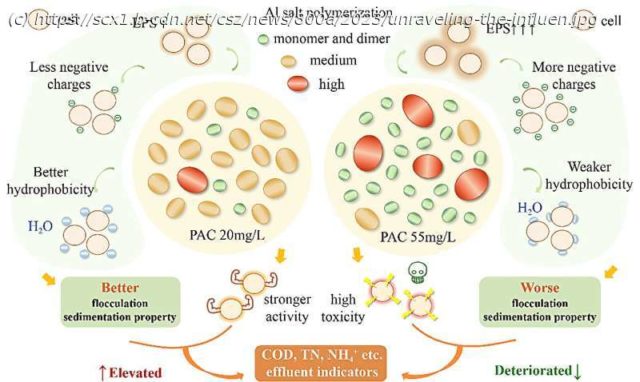Given that previous studies have neglected the potential mechanism of the difference in aluminum content affecting the activated sludge system, a research team from Wuhan University of Technology has investigated the morphology distributions of residual aluminum salts (RAS) and their effects on the removal efficiency of activated sludge (AS) under different PAC concentrations, and revealed the internal mechanisms of the effects of the excessive and appropriate concentrations of RAS on the AS system.
Given that previous studies have neglected the potential mechanism of the difference in aluminum content affecting the activated sludge system, a research team from Wuhan University of Technology has investigated the morphology distributions of residual aluminum salts (RAS) and their effects on the removal efficiency of activated sludge (AS) under different PAC concentrations, and revealed the internal mechanisms of the effects of the excessive and appropriate concentrations of RAS on the AS system.
The paper is published in the journal Frontiers of Environmental Science & Engineering.
This work improved the dominance of medium polymeric RAS, formed under an appropriate PAC dose of 20 mg/L enhanced the hydrophobicity, flocculation, and sedimentation performances of AS, as well as the enzymatic activity in cells in the sludge system, improving the main pollutants removal efficiency of the treatment system.
The activated sludge (AS) method has been extensively utilized in industrial wastewater treatment systems worldwide due to its strong economy, excellent treatment efficiency, and strong adaptability to practical application. However, for the increasing content of organic suspended matters in industrial wastewater, physical and chemical methods must be introduced as auxiliary processing for biological treatment.






